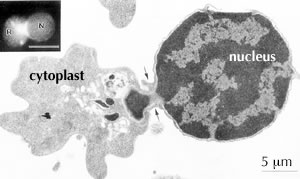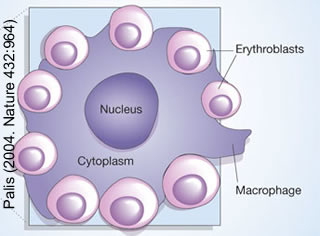 |
As you point out, during their maturation human red blood cells (erythrocytes) eject their nuclei, together with the rest of their organelles.
The exact mechanism behind this process remains incompletely understood, but it appears to be specialized version of non-symmetric cytokinesis (cell division without mitosis).
